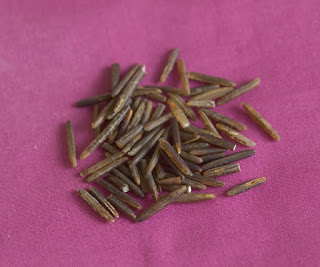Explore The of Science of Dangerous Plastic Rice
Natural Rice
Natural Gluntinous Rice
Rich in amylopectin
Low in amylose content
Waxy and Sticky
After cooking the rice made into ball can bounce
Popular in South East Asia including India
Glutinous differs from the regular (non-glutinous) rice mainly in having low (<5%) or almost no amylose in its starch but basically high in amylopectin. Amylose is essentially long linear chains composed of (1→4)-linked α-Dglucopyranosyl units with a few (1→6)-α-linkages branches whilst amylopectin has a higher molecular weight and much shorter chains of (1→4)-linked α-D-glucose units that are highly branched through additional (1→6)-α-linkages (Fig. 1). In general, the amylose content of rice starch varies from 0-
2% in waxy (glutinous), 20-25% in normal or medium and up to 30% in high-amylose rice grains.
Plastic rice
Plastic rice was made from sweet potatoes, potatoes, and artificial resin. It was edible, but dangerous - akin to eating vinyl, as the body is unable to digest it.
Plastic rice contains a superficial layer of plastic coating, it cannot react with re-agents which we use it for determination of double stain method / De-husk test method. As per general appearance, paddy rice can be easily identifiable by presence of loose bran and the rice commonly will absorb the water contents.
Five Simple Test to detect Plastic Rice as Recommended by Andhra Government
1. Water Test for Plastic Rice:
Get a glass of cold water, pour a tablespoon of raw rice in the glass and stir. If the rice goes to the bottom, it is all good. If it floats at the top, it means it contains ‘plastic rice’.
2. Boiling test:
Observe the rice while boiling. If it starts forming a thick layer at the top of the pot, it is plastic rice.
3. Hot oil test:
Take some of the rice drop into some real hot oil, it will melt or stick together or stick at the bottom of the pan if it is fake.
4. Fire test:
Get a lighter and burn a handful of rice – If it catches fire and smells like burnt plastic, it is fake.
5. The Fungus Test: After boiling the rice, put some of it in a bottle and leave it for 3 days. if mould does not appear, then your rice is fake, Plastic rice will not grow mould in any weather conditions.


Comments
Post a Comment